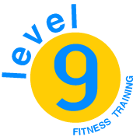Let’s get a clear picture of what’s actually happening as you move those dumbbells and work up a sweat.
Some of my Long Beach clients tell me they’re curious about the actual process of building muscle, while others say they really don’t care as long as it works…and it does!
So this post is for those clients who want to know about the process of building muscle which ultimately also leads to fat loss, weight loss and a better physique both functionally and aesthetically AKA Lookin’ Fine as Hell!
Every time I design a Boot Camp workout I look at a bunch of factors, then tie weight training, body weight exercises, exercise bands, cardio and other equipment together in a series that usually lasts 30 to 55 minutes and hits all muscle groups in a way that will produce fast results. Remember- Even though we use a middle weight (meaning a weight that most members can lift approximately 20 times, depending on the exercise) we are weight lifters at boot camp. We’re just not gym rats and we lift smart.
Weight Training Types
Progressive Muscle Overload
Simply put: we need to increase the work-load of a muscle or muscle group to make it grow. If you always lift (or pull, or push, etc) the same weight or amount of resistance you will never progress and your body will not change shape. We have to actually leave our comfort zone and stress the muscles in order to initiate a change. Basically we’re lifting more than we think we can or we’re doing more reps than we did the previous group exercise or personal training session.
Muscle Isolation
We can force multiple muscle groups to work together in compound exercises or we can isolate one muscle or group in order to focus all of our energy and power on that muscle. Isolation works well as we focus in on one area of the body by using proper form combined with the correct weight to rep ratio.
Muscular Adaptation
Muscular adaptation goes against our long term goals for lean mass, weight loss and toning. Adaptation happens when a person repeats the same exercises with the same rep count and resistance over and over again. The long term result for about 95% of people who train this way is the dreaded plateau. In order to avoid a plateau you need to constantly change your workout routines and never allow your body to acclimate to one specific routine. My Long Beach CA Boot Camps utilize my own system of Mixed Method Muscle Confusion which, in simple terms is an anti-adaptation training program.
Muscle Priority Training
Generally you should exercise your most underdeveloped muscle group first when your body is still fresh and energized. Hitting the weakest muscles while you are operating at 90% to 100% strength and energy levels will allow you to use your full potential to work on developing those muscles. The flip side would be hitting those muscles after you’ve expended most of your energy training more developed muscles. Train smart and you’ll get better results.
Flushing the Muscles
In order to grow new lean muscle it is important to flush that muscle or muscle group with blood and keep it there until the muscle is exhausted and you feel the “Good Burn.” This means that as you work on a specific muscle group you can tie in multiple exercises (muscle confusion) for that specific muscle group. As you keep blood in one area you’ll be making microscopic tears in the muscle fibers and promoting growth as you heal for 24 to 48 hours and sometimes longer if you’re experiencing Delayed Onset Muscle Soreness (DOMS) which generally only happens if you’re new to weight training or have not worked a specific muscle group for a long period of time.
Consistent Muscular Tension
If you’ve been in any of my Boot Camps in Long Beach or if I’ve had the pleasure of being your Personal Trainer you already know how important FFC is- Form, Focus and Control when we’re working with weights. The exception to this rule is Kettlebell Fitness Training, which does require momentum and faster movements but I’m focused on standard weight training in this post. Constant muscle muscular tension means that we’re using slow to moderate rep counts to provide tension on the muscles so they’re always working. We’re putting additional stress on the negative half of each rep when gravity would be happy to assist you. We need to control the bumbbells, barbell, etc. with precision in order to keep the muscle active. Often times I’ll also have my personal training clients avoid rest points at the top and bottom of each repetition for additional tension.
I hope this info is useful to those of you who ask “Why did we do it that way?” or “What’s the reasoning behind that series of movements?” or any other questions along those lines. Remember I’m here to help, even if you’re not a Level 9 client.






